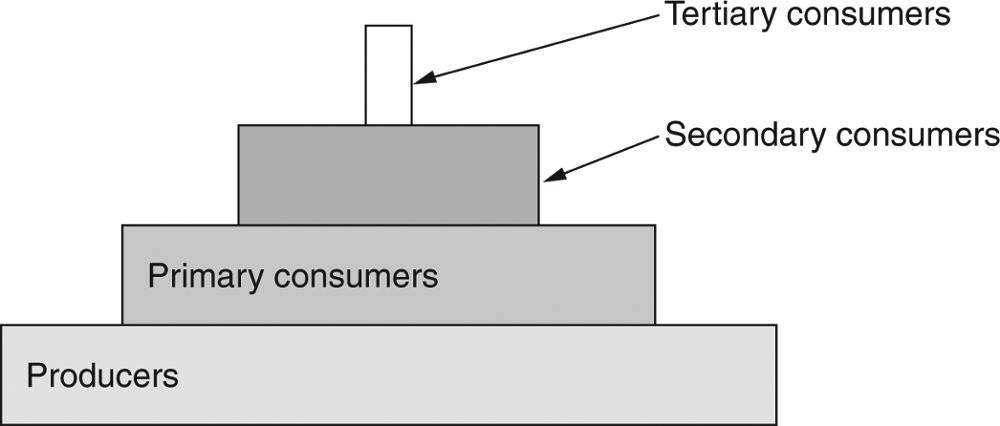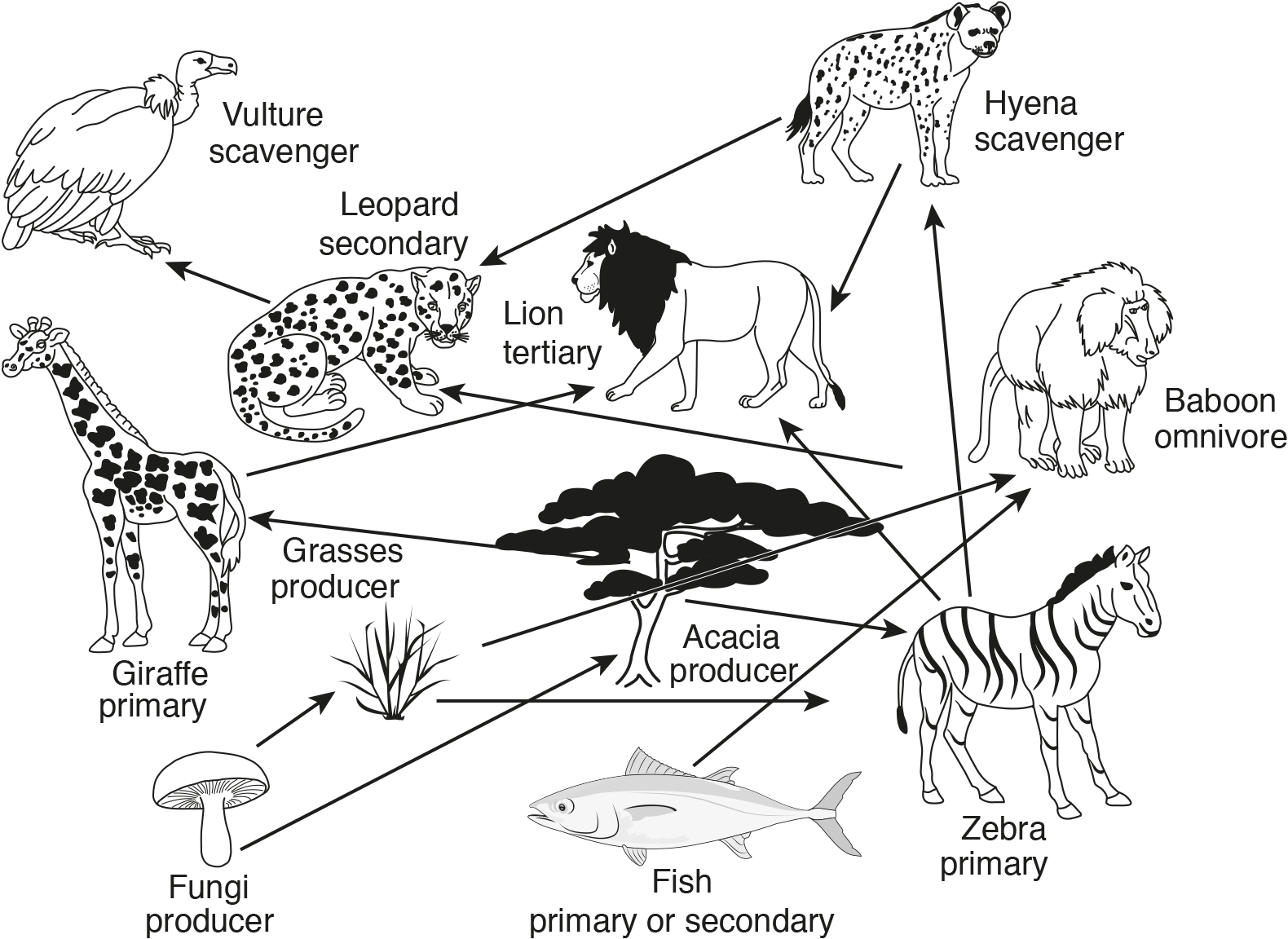Ecology
Ecology is the study of the interrelationships between organisms and their physical surroundings. Just as biologists classify organisms according to terminology that goes from the general to the specific, ecologists employ a similar set of terminology:
- Biosphere: The zone of planet Earth where life naturally occurs, including land, water, and air, extending from the deep crust to the lower atmosphere.
- Biome: A major life zone of interrelated species bound together by similar climate, vegetation, and animal life.
- Ecosystem: A system made up of a community of animals, plants, and other organisms as well as the abiotic (non-living) aspects of its environment.
- Community: The collection of all ecologically connected species in an area.
- Population: A group of organisms of the same species living in the same region.
An ecosystem can be large or small, and can include both pristine and highly developed areas. An ecosystem contains a community, and this community may contain many populations of organisms. The various populations within a community fall into one of several roles in the food chain.
- Producers (mainly plant life): Also known as autotrophs, they make their own food via photosynthesis.
- Decomposers (bacteria and fungi): Also known as saprotrophs, they break down organic matter and release minerals back into the soil.
- Scavengers (many insects and certain vertebrates, such as vultures and jackals): These animals exhibit characteristics of decomposers by consuming refuse and decaying organic matter, especially carrion, or decaying flesh. Similar organisms called detritivores consume the small pieces of decaying organic matter called detritus that are too small for most scavengers to want.
- Consumers (most animals): Also known as heterotrophs, refers to animals that consume other organisms to survive. Consumers are divided into three types:
- Primary consumers: Also known as herbivores, they subsist on producers, such as plants. Examples include grasshoppers, deer, cows, and rabbits.
- Secondary consumers: Also known as carnivores or predators, they subsist mainly on primary consumers. Examples of secondary consumers include birds of prey (such as owls and falcons), foxes, and snakes. Some secondary consumers are also omnivores, meaning they consume producers and consumers as well. Examples include chickens, rats, some lizards, and sea otters.
- Tertiary consumers: Also known as top carnivores, they are capable of eating secondary consumers. Many tertiary consumers are also omnivores. Examples include lions, wolves, and sharks, as well as human beings.
The diagram below shows roughly the relationships between these groups in an ecosystem:
Hierarchy of consumers

Food chains are a basic way to see the levels in an ecosystem. However, food webs can show more complex relationships that exist amongst the levels. In the example below, the organism to which an arrow points might eat the organism on the other end of that arrow.
A Food Web

Study this example of a solid approach to an ecology question.
| Question | Analysis |
|---|---|
| Which of the following is the term for the zone that extends from the Earth’s crust through the lower atmosphere and which encompasses all life on Earth? | Step 1: The question is asking for the name of the zone containing all life on Earth. |
| Step 2: Not much to simplify here. | |
| Step 3: The question describes the biosphere. | |
| (A) biome (B) biosphere (C) ecosystem (D) stratosphere |
Step 4: Based on the prediction above, select answer choice (B). The biosphere begins in the deep crust of the Earth and includes all areas where life can exist—land, water, and air. An ecosystem and a biome are smaller areas. The stratosphere is higher than the lower atmosphere. |
Try your hand at the problem below:
-
Which of the following is a decomposer? - vulture
- fly
- oak tree
- bacteria
Explanation
Choose (D). Bacteria are considered a decomposer because they break down dead matter and release it back to the soil as minerals. Flies and vultures would be scavengers, and a tree would be an autotroph.